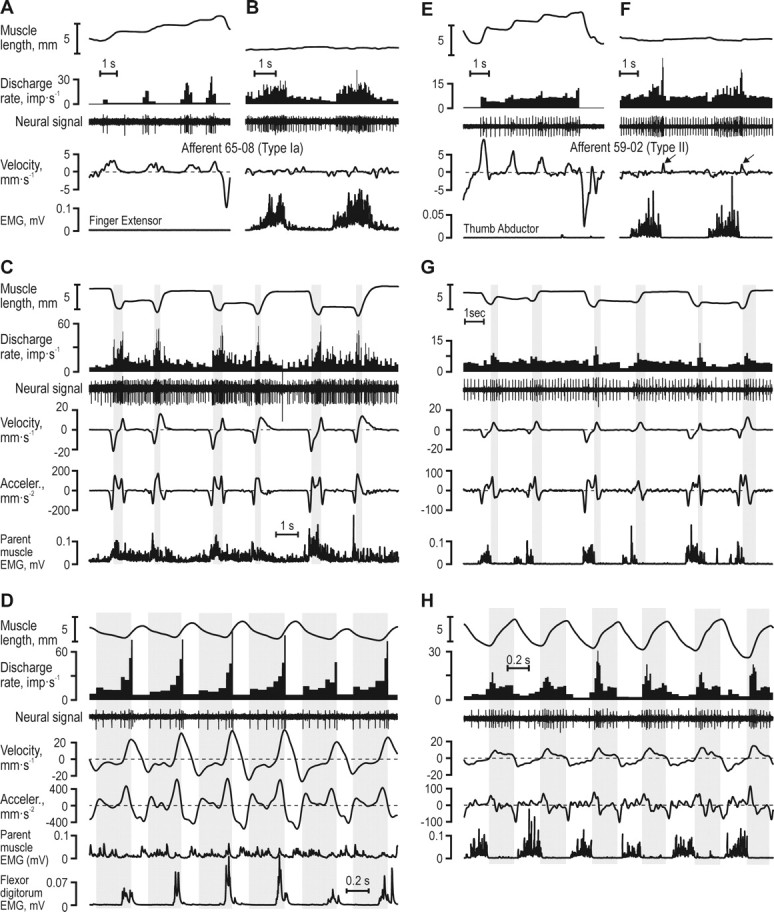Figure 3.

Responses of typical muscle spindle afferents. A–D, Ia afferent from the finger extensor and E–H, type II afferent from the thumb abductor. A, E, Responses to passive muscle length changes. B, F, Responses during near-isometric contractions. C, G, Record of the subjects grasping, holding and releasing blocks of increasing widths (40, 50 and 60 mm). Whereas the type Ia afferent discharged preferentially when the second time derivative of muscle length (acceleration) was positive (vertical gray bars in C) and in particular when both acceleration and velocity were positive, the type II afferent discharged preferentially during phases of muscle stretch (vertical gray bars in G). The discharge of neither afferent displayed an obvious relationship to muscle length. D, H, Both afferents showed the same dependence on kinematics during active sinusoidal joint movement and block grasping.
